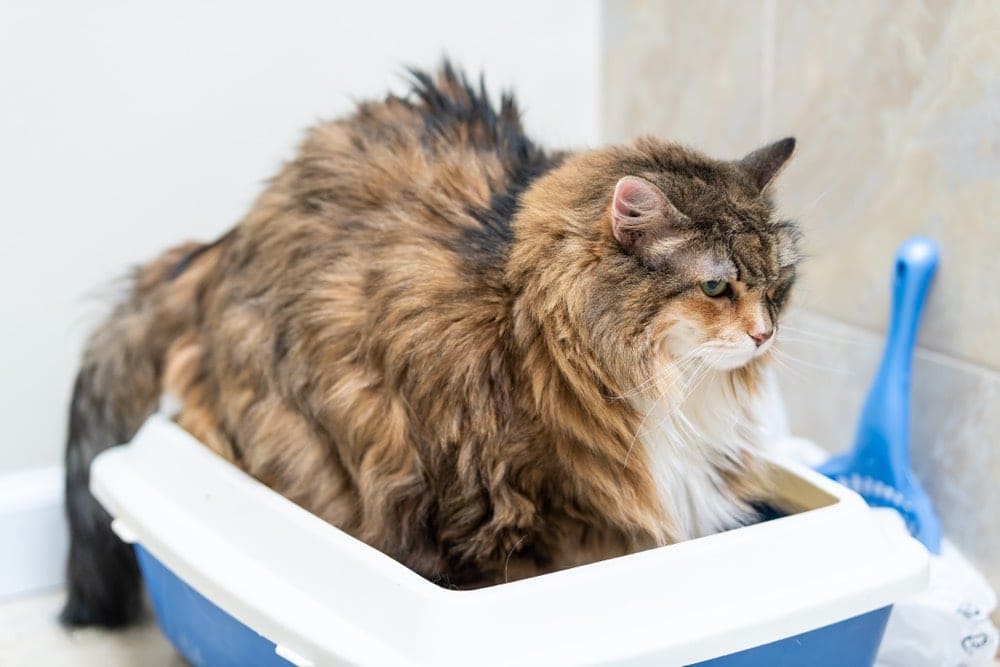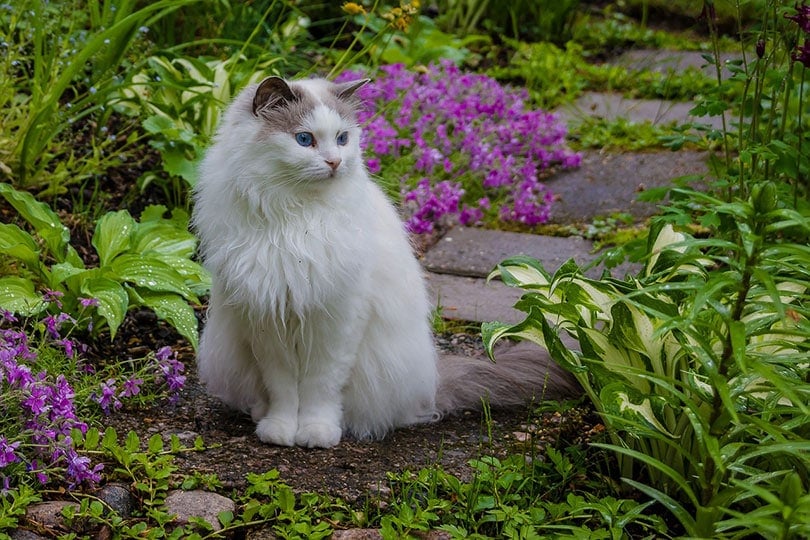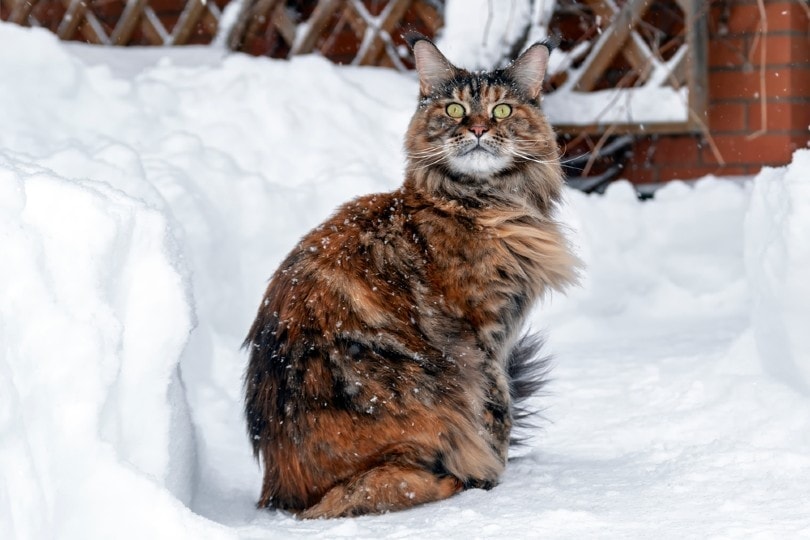Did you know that your cat’s toileting habits can tell you a lot about what’s going on with their health? There is a wealth of information hidden in the litter tray, and it is likely your veterinarian will ask you lots of questions – and seem a little weird in the detail they ask for – when it comes to poop!

What is normal?
Let’s think about what’s normal first. While there isn’t a hard and fast rule, the consensus is that a cat should pass a bowel motion one to two times per day. Some cats may go a little more or less frequently.
A normal bowel motion should be a chocolate brown color, formed (i.e., log-shaped), moist, and not hugely smelly (it is expected for there to be some odor, but if it’s clearing the room, then it is worth having a chat with your veterinarian). Royal Canin has a very useful stool chart for a more visual representation of this.
The frequency, color, and consistency of bowel motions can be affected by many things. Not all causes of variation mean your cat is poorly but if unsure, please call your veterinarian, who will let you know if you need to make a trip to the clinic or not.
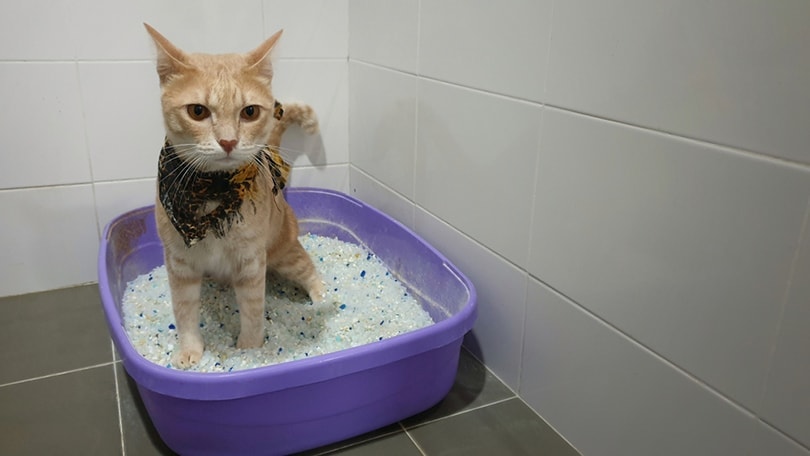
Diet
The quality of the diet fed to your pet will impact the amount they poop. Low-quality diets make for larger or more frequent poops. This is because less of the food is usable, so more comes out the other end. Abrupt changes in diet or food allergies can cause diarrhea, and diet changes should be gradual. It is also essential to make sure your cat has plenty to drink, especially if fed a dry diet, to reduce the risk of constipation.
Age
Kittens will poop more frequently than adult cats. Senior cats are more likely to have secondary health conditions affecting their toileting habits. While often overlooked, older cats with painful joints may be reluctant to posture to poo, leading to constipation.
Exercise
Cats that lead a more active lifestyle are likely to poop more frequently than those who prefer to laze their days away in a sunny spot.
How will I know there’s a problem?
We think about four broad categories when narrowing down a problem with your cat’s bowel motions. These are consistency, color, frequency, and duration of the problem.
Consistency
Too hard
Bowel motions that are too hard can result from your pet not getting enough fiber in their diet or not drinking enough water. These hard poos can be difficult or painful for your pet to pass. You may notice them straining at the litter tray or crying as they go to the toilet. It can also be a sign of more serious problems. Constipation is when poop builds up in the colon; often the poo is very hard.
It is imperative that if you see your pet straining at the litter tray, you make sure they are trying to poo and not wee. Check for wet litter from that day. Constipation is uncomfortable and warrants a prompt chat with your vet as without treatment it can cause significant problems. However, a bladder obstruction is a medical emergency as it can rapidly lead to death; your cat should be seen at the emergency room as soon as possible.
If your pet is constipated, they may need a laxative or hospitalization for rehydration with a drip or even an enema. Further tests are also likely to be needed to get to the bottom of why it has been happening. Prolonged constipation can lead to permanent damage to the gut, which can be costly to treat. Never administer an enema on your pet at home. Over-the-counter preparations can cause fatal disruptions in your pet’s body salt levels.
Too soft
Bowel motions that are too soft, also called diarrhea, can vary from soft but formed through to watery.
Diarrhea is a symptom of many health problems such as parasite infections, dietary indiscretion, inflammatory gut disease, liver or pancreatic disease, and vitamin or hormone imbalances. While it seems counter-intuitive, diarrhea can also occur with constipation – when liquid poop squeezes around the obstruction in the large bowel. If your pet has a short-lived, mild bout of diarrhea it is often OK to watch them at home. If it lasts more than a few days, is very severe, or you notice the poops look black or bloody then a trip to the clinic is sensible.
Antibiotics are no longer recommended in the general management of diarrhea as these can often worsen the problem.
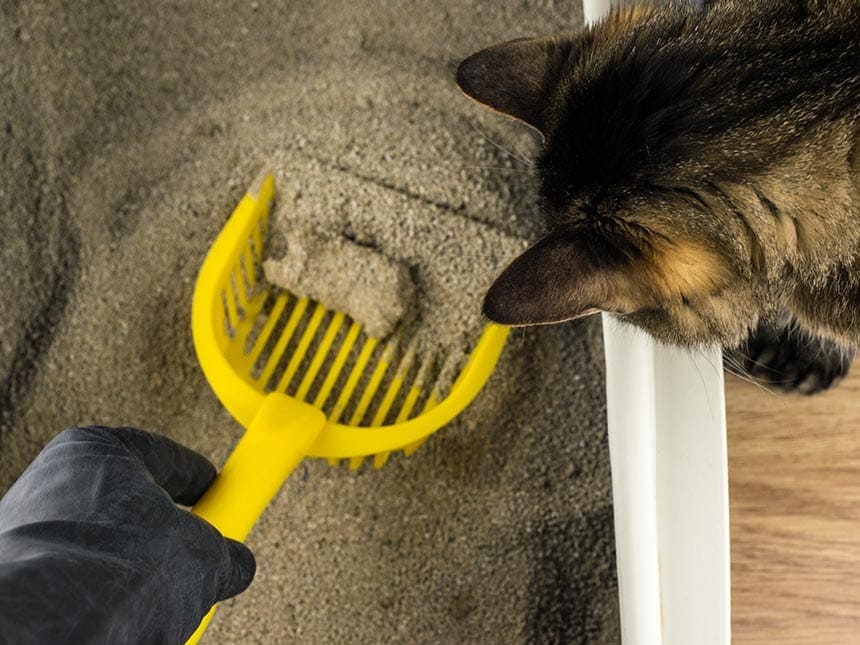
Color
Variations in the color of poop can also give clues to where the problem lies. Here are some examples:
- Black: usually associated with digested blood. This can indicate a bleeding ulcer, which can signify stomach, small intestinal, or liver problems, and some hormonal imbalances.
- Bloody or blood-streaked: fresh blood is usually the result of bleeding in the large intestine or colon. An isolated, small amount is often not too much of a cause for concern but large amounts of fresh blood or regular fresh streaks of blood on your cat’s motions should prompt a chat with your veterinarian.
- White or Gray: can be a sign of biliary or pancreatic disease.
- White flecked: can be a sign of parasite infections.
- Yellow/orange: can be a sign of liver or biliary disease.
Speak to your veterinarian if your cat’s poo is an abnormal color.
Frequency
The frequency of bowel motions can vary from cat to cat. You know what is normal for your cat and consistency to this pattern is key.
Increased
An increase in the frequency of your cat’s bowel motions, often associated with a softer or watery consistency, can be a sign of small intestinal, liver, pancreatic, or hormonal diseases.
Decreased
Your cat going to the litter tray to poop less frequently can happen for several reasons. It may be that your cat is eating less than usual, which can be a sign of a problem or normal behavior depending on the time of year. It may also be the result of a change of diet, reduced water intake, or gut disease.
Duration
Your veterinarian will ask you how long your pet has been showing signs for. The management of a problem that has only been happening for a day or two is likely to be different to if your pet has had the problem more chronically (for weeks or months). In the case of chronic problems, your vet is likely to recommend further investigations. Initially, this is likely to include blood tests, tummy imaging, and, depending on your pet’s signs, poo samples, to rule out more serious conditions. Short-lived problems are more likely to be managed with medication initially unless very severe.
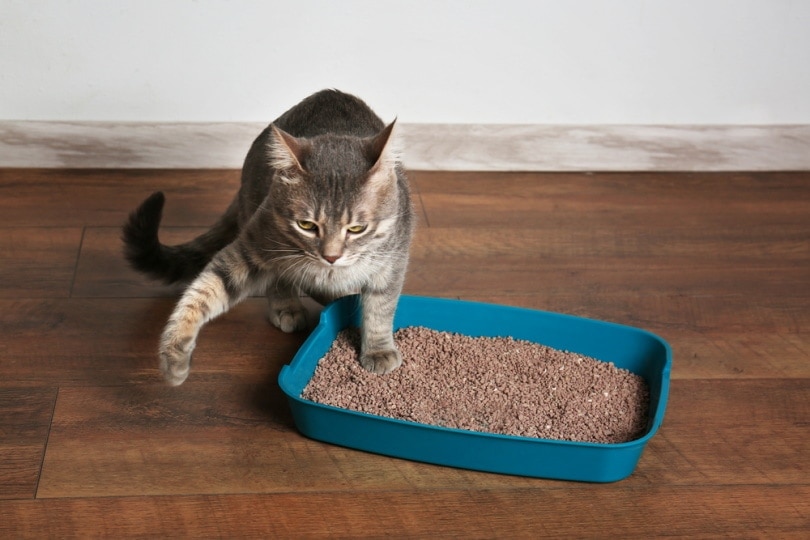
Other causes of changes to poop habits
It’s worth just noting the following things can also affect your feline companion’s toilet routine.
Behavioral
Cats are notoriously sensitive to stress. If you have a multi-cat household, even if your cats seem like besties, there can be issues such as resource guarding of litter trays, making your less dominant cat reluctant to go to the bathroom. Having multiple litter trays around the house, kept well away from food and water bowls, will ensure that everyone has stress-free access to a toilet.
As a rule of thumb, it is best to have one more litter tray than you do cats (for example, two cats should have three litter trays). Keep the trays clean and position them in quiet areas to allow for privacy when your cat needs the toilet – no one wants to poop in front of everyone in the living room!
Medication side effects
Lots of medications can affect bowel motions, much like in people. Common culprits include anti-inflammatory painkillers and antibiotics. Speak to your veterinarian if your pet is on a new medication and you notice a change in their toileting habits. They may advise a dose change or to stop the medication completely. It is vital to never give human medicine to your cat unless under direct veterinary guidance as the side effects can be fatal.
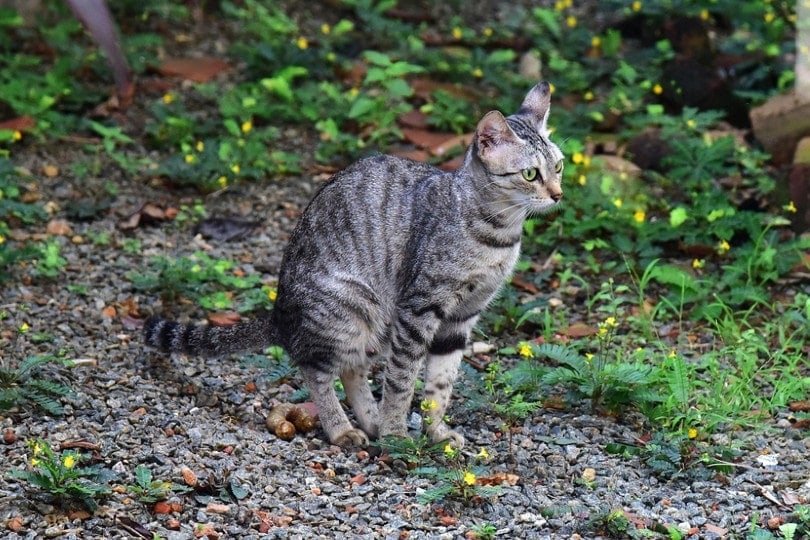

But my cat goes outside, I don’t know what her toileting habits are like!
We hear this commonly in the clinic, and many cats with an indoor/outdoor lifestyle will choose to toilet outside. While it does make describing the bowel motion itself impossible unless you are willing to go digging in the garden, there are some other aspects to your pet’s health that can give clues to their being a poop problem. If you notice any of the following it’s worth having a check-up with your veterinarian:
- Increase in drinking
- Increase or decrease in hunger
- Weight loss
- Behavioral changes
- Dull or unkempt fur
- Hiding away or more grumpy than usual.

Conclusion
Those rather grim deposits in the litter tray can give your vet a wealth of information on what’s going on inside your cat. Don’t be afraid to take some pictures to show us – this can be very helpful!
It’s worth remembering, cats are very good at hiding health problems until things get pretty serious so it’s always worth a check-up if you notice any changes with your feline friend, even if you can’t quite put your finger on the problem. It’s our job as veterinarians to do the detective work for you!
References
iCatCare (2021) Constipation in the cat https://icatcare.org/advice/constipation-in-the-cat/ [accessed 14th Nov 2021]
Royal Canin (2021) What is your cat’s poop telling you? https://www.royalcanin.com/us/cats/health-and-wellbeing/what-is-your-cats-poop-telling-you [accessed 12th Nov 2021]
VCA Hospital (2021) Constipation in cats https://vcahospitals.com/know-your-pet/constipation-in-cats [accessed 14th Nov 2021]
VCA Hospitals (2021) Diarrhea in cats https://vcahospitals.com/know-your-pet/diarrhea-in-cats [accessed 14th Nov 2021]
Featured Image Credit: Andriy Blokhin, Shutterstock
Contents


